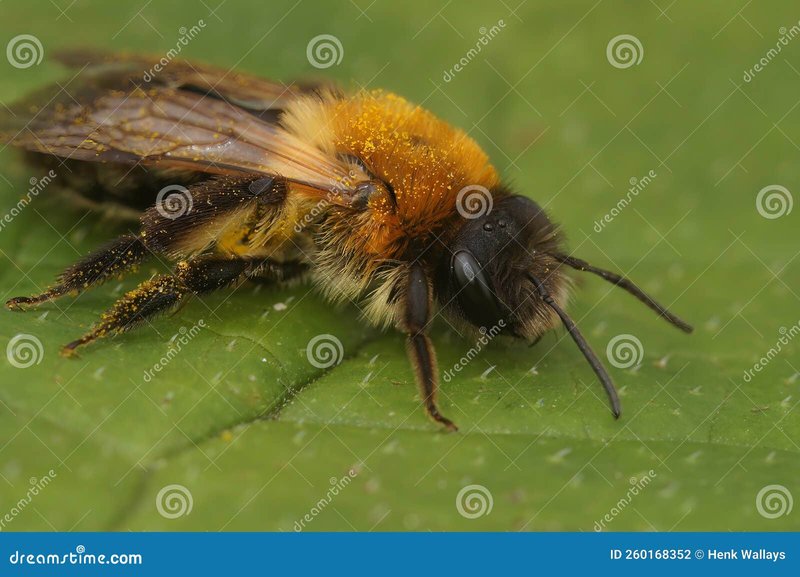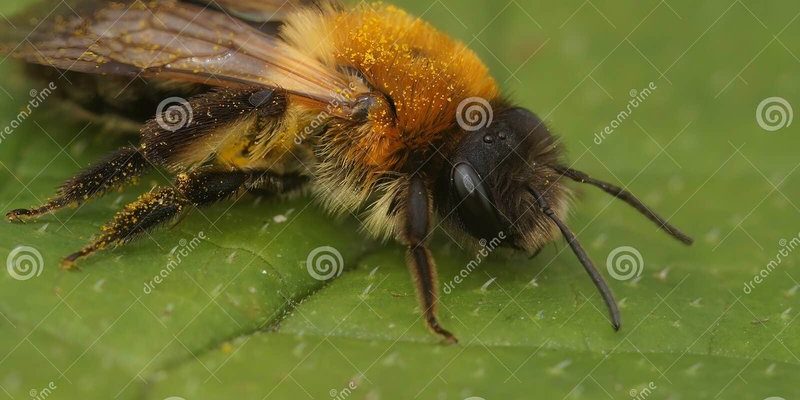
Mining bees belong to a group known as Andrenidae and are often found nesting in the ground rather than in hives. Think of them as the introverts of the bee world; they shy away from the hustle and bustle of honeybee colonies. Instead, they create little burrows where they gather pollen and nectar to feed their young. It’s tempting to label all bees as dangerous due to their stings, but the reality is more nuanced than that. Let’s explore the stinging behavior, aggression levels, and safety measures you can take when encountering these bees.
What Are Mining Bees?
Mining bees are solitary bees that typically emerge in the spring. They’re easy to recognize with their robust, fuzzy bodies and a lack of bright markings, which sets them apart from their more colorful cousins. These bees are generally small, measuring about 8 to 15 millimeters long.
You might notice them buzzing around flowers, collecting pollen. They play a crucial role in pollination, helping to fertilize many plants as they go about their daily business. Their nests, which can look like little mounds or holes in the ground, often appear in clusters. This grouping can sometimes make them seem more intimidating, but they are generally harmless.
Unlike honeybees, which are known for their aggressive defense of the hive, mining bees are typically more reserved. They prefer to focus on gathering resources rather than tangling with humans. Most mining bee species are active during the day, making them easy to spot if you’re out in your garden or park.
Do Mining Bees Sting?
Now, let’s tackle the big question: do mining bees sting? The short answer is yes, but their stings are quite rare. Let me explain. Mining bees are not aggressive by nature. They usually sting only when they feel threatened. For instance, if you accidentally brush against one or disturb their nests, they might decide to defend themselves.
But here’s the kicker: their sting is mild compared to that of honeybees or wasps. Most people report only minor discomfort, similar to a mosquito bite. If you do get stung, you may experience a slight burning sensation or redness at the site, but serious reactions are uncommon.
If you’re particularly sensitive to stings or have allergies to bee venom, it’s better to be cautious. However, most folks can enjoy the presence of these bees without fear, as long as they give them some space.
Aggression Levels of Mining Bees
When it comes to aggression, mining bees are on the low end of the scale. Unlike wasps, who can be quite territorial, mining bees are more like the peaceful introverts of the insect kingdom. If you observe them closely, you might notice them busily gathering pollen without a care in the world about nearby humans.
They typically avoid confrontation, and their first instinct is to flee rather than attack. If you’re gardening or hanging out in areas where mining bees are active, you may see them flying nearby, but they’re usually more interested in flowers than interacting with people.
One characteristic that stands out is their tendency to nest in the ground, which can make them less visible. This means they don’t usually feel the need to defend a colony, making them even less likely to display aggressive behavior. Overall, mining bees can be beneficial friends to have around, promoting a healthy garden ecosystem.
How to Stay Safe Around Mining Bees
Even though mining bees are generally docile, it’s always wise to take precautions when you’re around them. Here are a few tips to ensure a peaceful experience:
- Observe from a distance: Enjoy watching these bees at work, but try not to get too close to their nests.
- Don’t disturb their nests: If you spot a mining bee nest, avoid digging it up or poking at it. Let them be!
- Dress appropriately: If you’re allergic to bee stings, it might be a good idea to wear long sleeves and pants when gardening in bee-active areas.
- Stay calm: If a mining bee flies near you, don’t swat at it. Just be still, and it will likely move on.
By following these simple guidelines, you can safely enjoy the benefits that mining bees bring to your garden. Remember, they are key players in pollination, which is vital for many fruits and vegetables.
Comparing Mining Bees to Other Bees
You might be wondering how mining bees stack up against other types of bees, especially honeybees and bumblebees. While honeybees are famous for their hives and honey production, they can be quite defensive, especially in late summer when the hive is busy prepping for winter. Honeybee stings are more potent and can lead to allergic reactions.
Bumblebees, on the other hand, are bigger and fuzzier. They can be more aggressive than mining bees, especially when defending their nests. They have a tendency to defend their territory vigorously if they feel threatened.
In contrast, the mellow nature of mining bees makes them a joy to have in your garden. They don’t form large colonies, and they don’t have a hive structure to defend. This means they’re much less likely to sting or cause alarm.
Are Mining Bees Beneficial to Your Garden?
Absolutely! Mining bees are nature’s little helpers. They are excellent pollinators and can significantly enhance the yield of many plants. Without them, many flowers would struggle to produce fruit and seeds.
Their role in pollination cannot be overstated. When they visit flowers, they transfer pollen, which helps plants reproduce. This process is vital for various fruits, vegetables, and wildflowers. A healthy gardening ecosystem relies on these helpful insects.
Plus, they’re often one of the first bees to emerge in spring, making them essential for early blooming plants. So, having mining bees in your yard can lead to a more vibrant and productive garden.
When it comes to the question of whether mining bees are dangerous, the answer leans heavily towards no. These little bees are not only harmless but also invaluable to our gardens. With a little understanding and respect for their space, you can safely coexist with these fuzzy friends.
So, the next time you see a mining bee buzzing about, take a moment to appreciate the role they play in our ecosystem. They might just be the unsung heroes of your backyard, working tirelessly to keep your flowers blooming and your garden thriving. Embrace their presence, and let them do what they do best—pollinate and support our environment!

